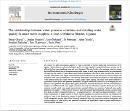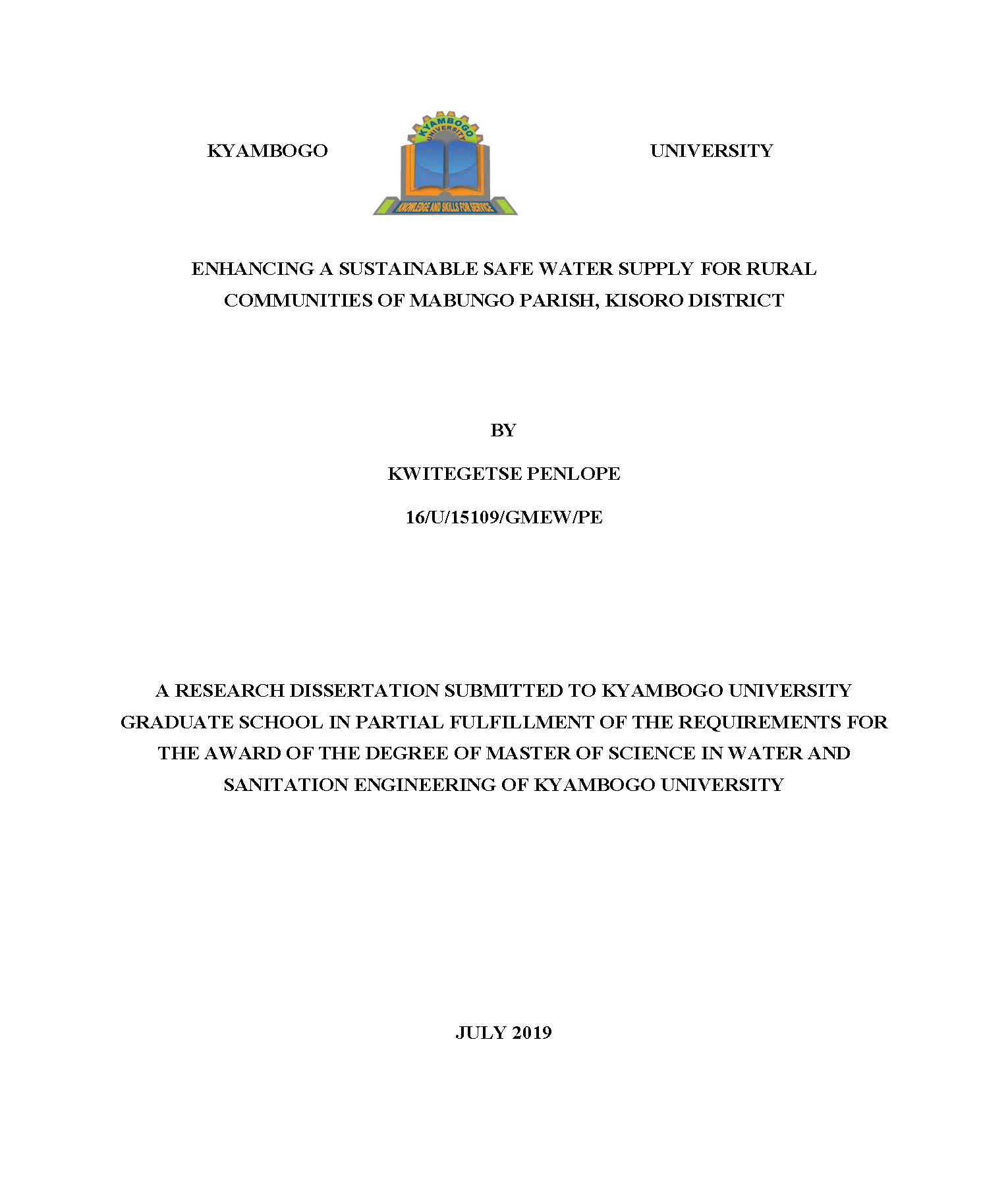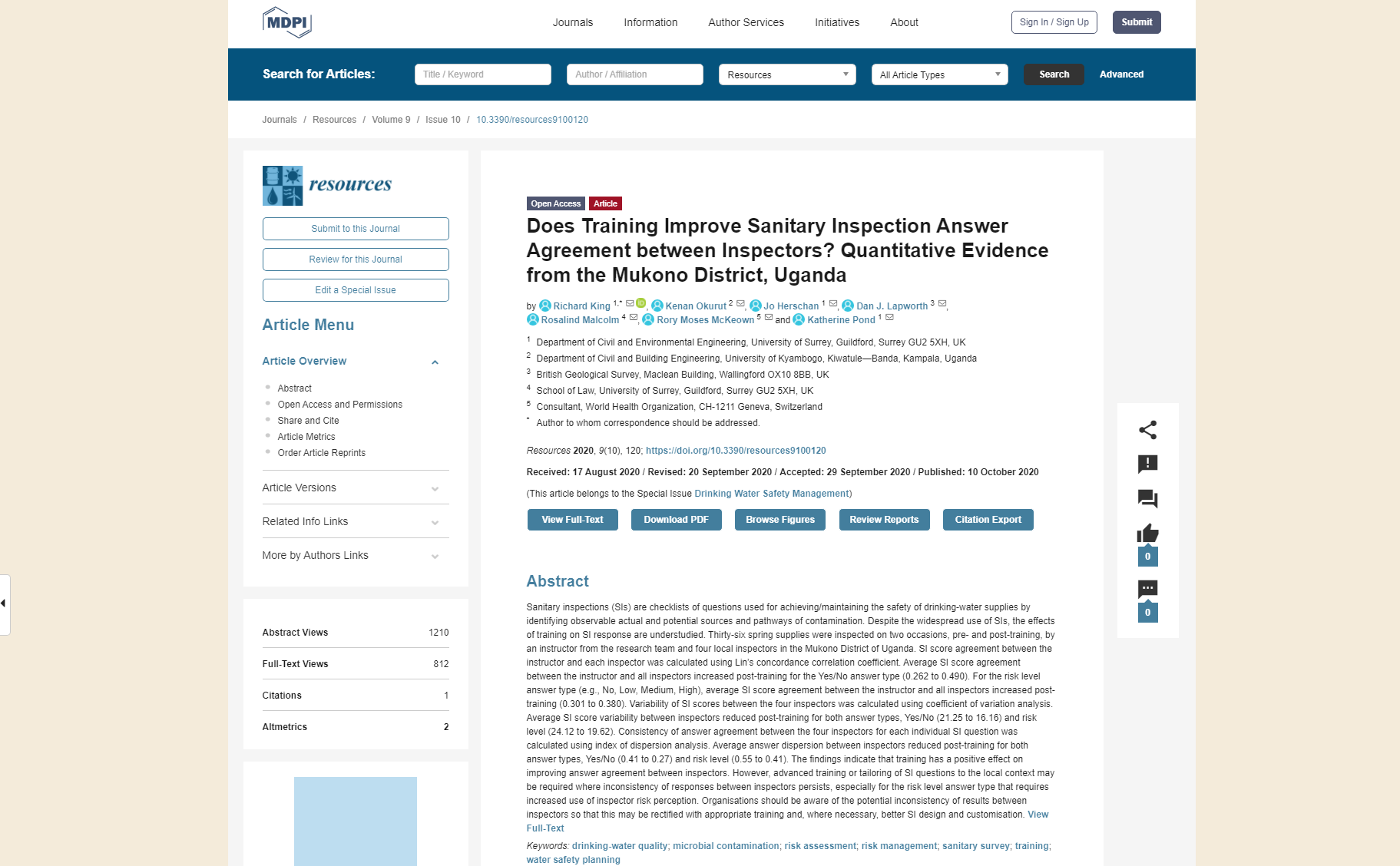| dc.contributor.author | Kenan, Okurut | |
| dc.contributor.author | Jamiru, Ntumwa | |
| dc.contributor.author | Anne, Nakagiri | |
| dc.contributor.author | Jo, Herschan | |
| dc.contributor.author | Aime, Tsinda | |
| dc.contributor.author | Rosalind, Malcolm | |
| dc.contributor.author | Dan, J Lapworth | |
| dc.contributor.author | Kathy, Pond | |
| dc.date.accessioned | 2023-10-11T09:50:27Z | |
| dc.date.available | 2023-10-11T09:50:27Z | |
| dc.date.issued | 2023-09 | |
| dc.identifier.citation | Okurut, K., Ntumwa, J., Nakagiri, A., Herschan, J., Tsinda, A., Malcolm, R., ... & Pond, K. (2023). The relationship between water pressure variations and drinking-water quality in small water supplies: A case of Mukono District, Uganda. Environmental Challenges, 100771. | en_US |
| dc.identifier.uri | https://doi.org/10.1016/j.envc.2023.100771 | |
| dc.identifier.uri | https://hdl.handle.net/20.500.12504/1446 | |
| dc.description.abstract | The supply of a safe and adequate quantity of water is essential for human health and socioeconomic devel-
opment. Physiochemical and microbiological quality of water supplied in piped distribution systems can be
affected by long water residence times and travel distances. This may be due to low pressure, reservoir storage
and insufficient disinfection in the system among other causes. As such, large schemes usually have mechanisms
of improving the quality of water along supply and/or distribution networks at reservoir and other points. In
contrast, small, piped water supply schemes rarely have the infrastructure and resources to monitor and provide
treatment to the water in distribution. The objective of this study was to assess the variation of water quality and
water pressure along the supply network in small, piped water systems. The study used mixed methods of
quantitative water quality and pressure assessments, alongside stakeholder interviews, to investigate the vari-
ability of water pressure and specific water quality parameters across the distribution network, and reliability of
supply in two different small water supply schemes in the study area of Mukono, Uganda. Results showed water
pressure in small, piped water supply networks have minimal influence on variation of selected water quality
parameters in smaller (< 4000 m travel distances) and well operated and maintained systems. A pressure drop
from 82.2 m to 22.5 m changed Turbidity by < 1, Apparent Color by < x10 and Total Dissolved Solids by < x102.
Proper management of supply systems to ensure optimal residual and continuous pressure can safeguard the
quality of water in the distribution systems of small piped water networks against intrusion of contaminants.
Good management practice that utilizes historical operational data with continuous capacity development and
training support on water quality and pressure fluctuations can significantly improve system performance to
meet acceptable standards. | en_US |
| dc.language.iso | en | en_US |
| dc.publisher | Environmental Challenges | en_US |
| dc.subject | Operational data | en_US |
| dc.subject | Performance | en_US |
| dc.subject | Small supply schemes | en_US |
| dc.subject | Water pressure | en_US |
| dc.subject | Water quality | en_US |
| dc.subject | Water pressure variations | en_US |
| dc.subject | Drinking-water quality | en_US |
| dc.subject | Mukono District | en_US |
| dc.subject | Uganda | en_US |
| dc.title | The relationship between water pressure variations and drinking-water quality in small water supplies: A case of Mukono District, Uganda | en_US |
| dc.type | Article | en_US |



